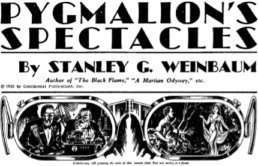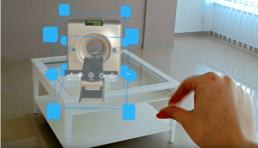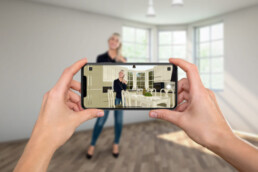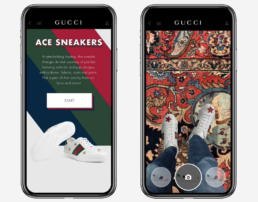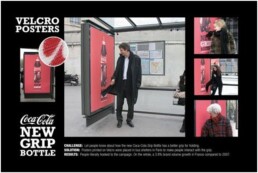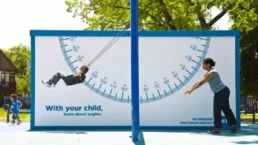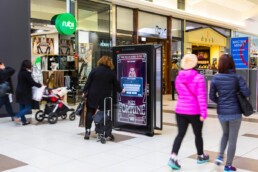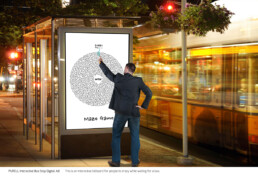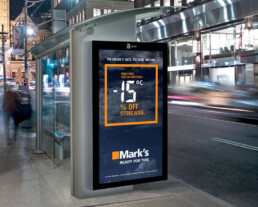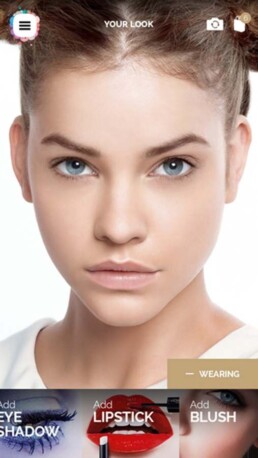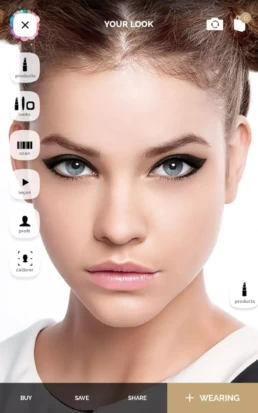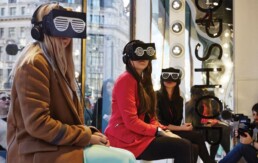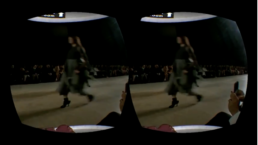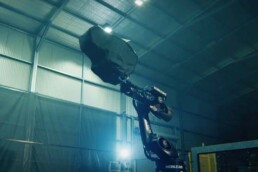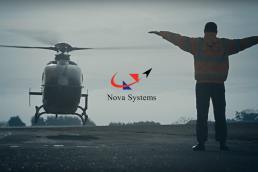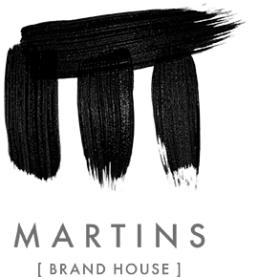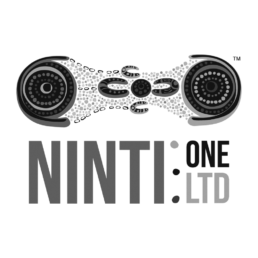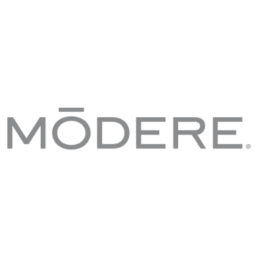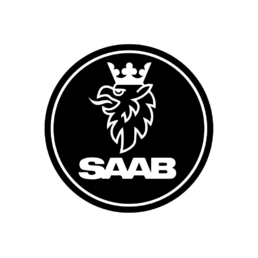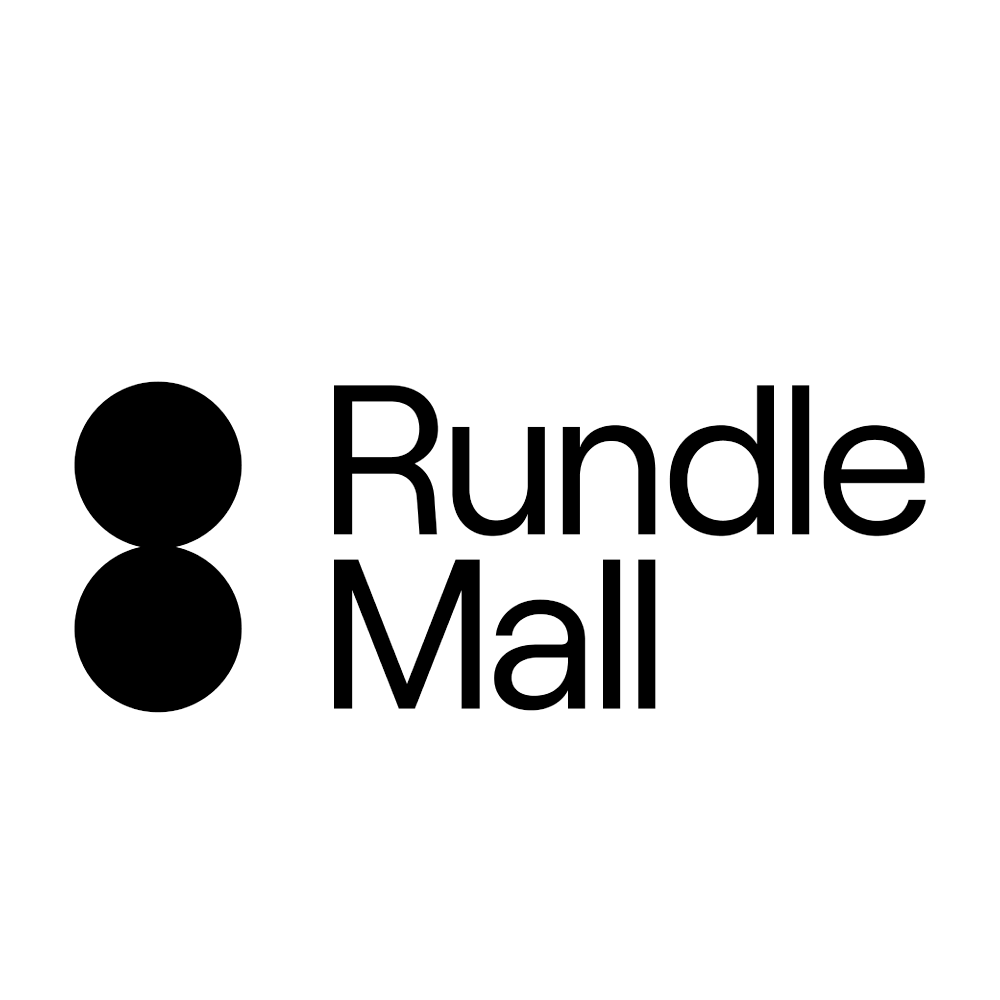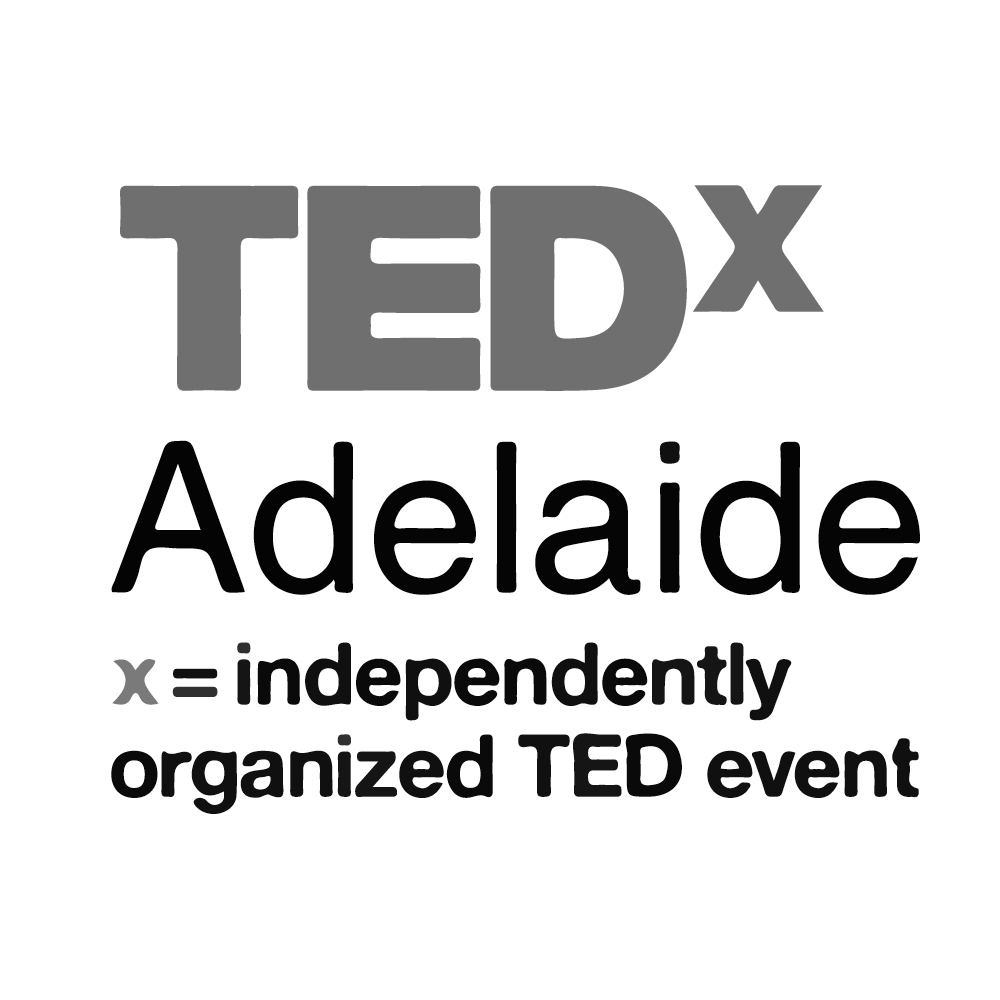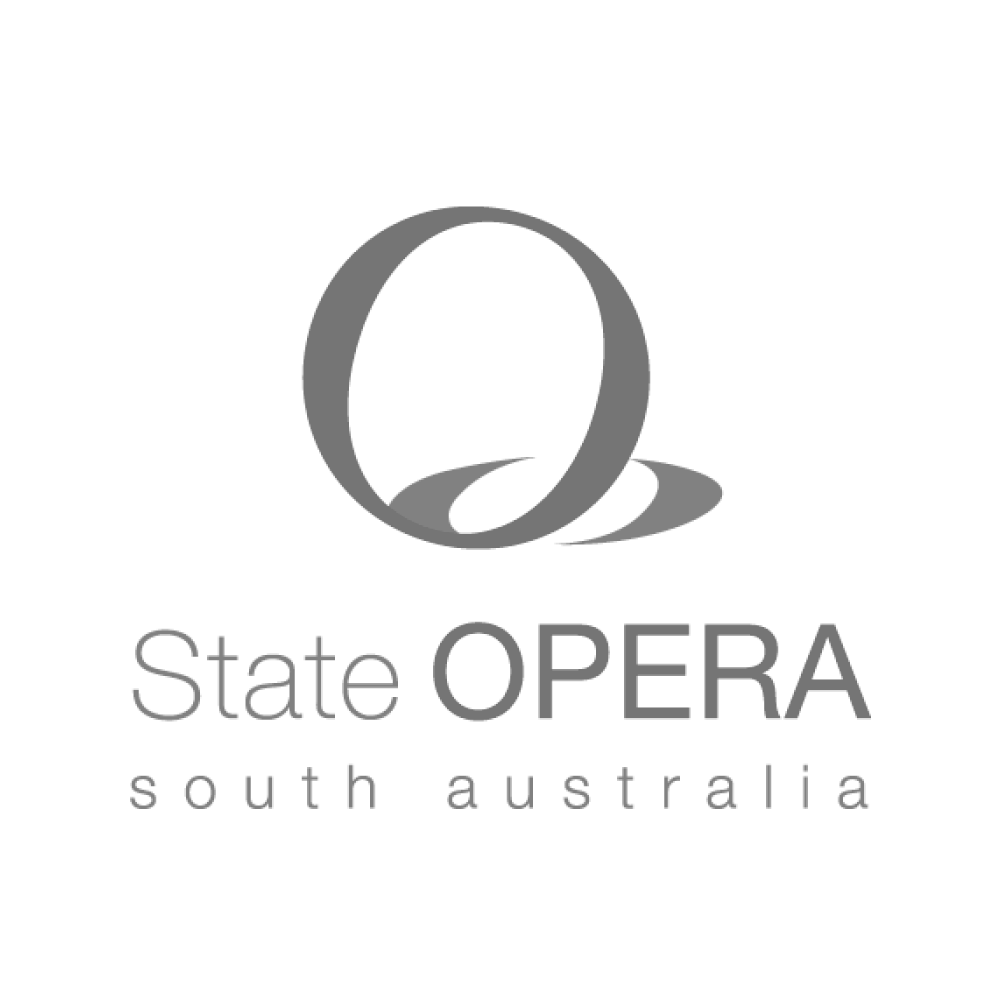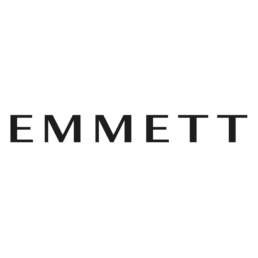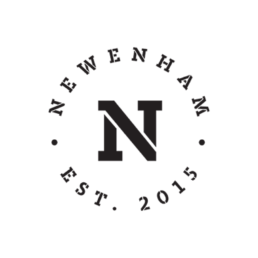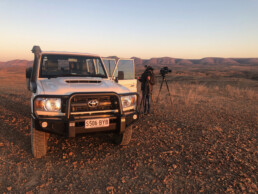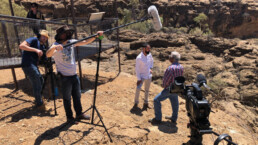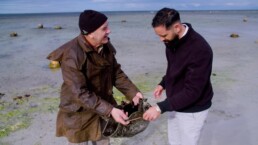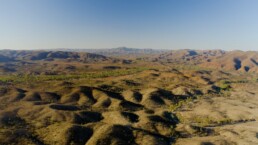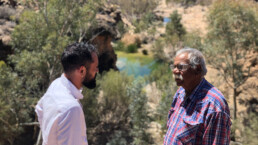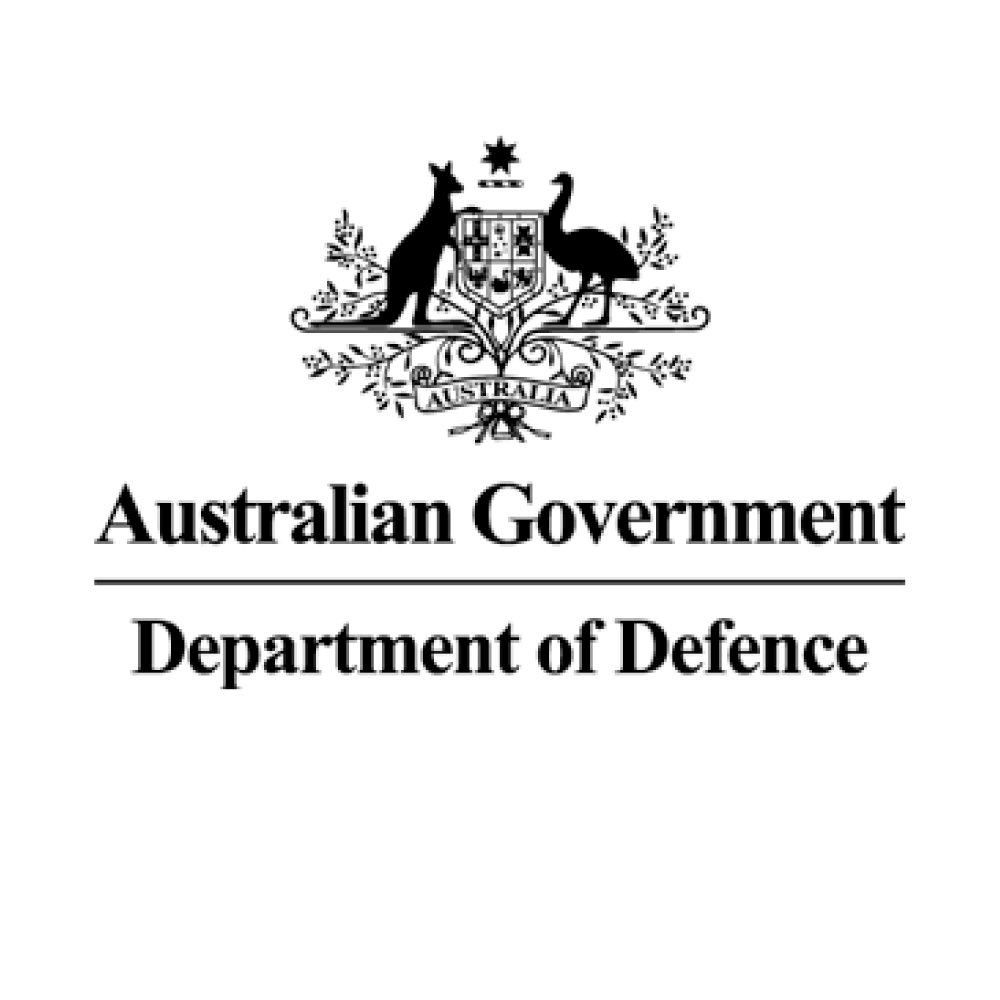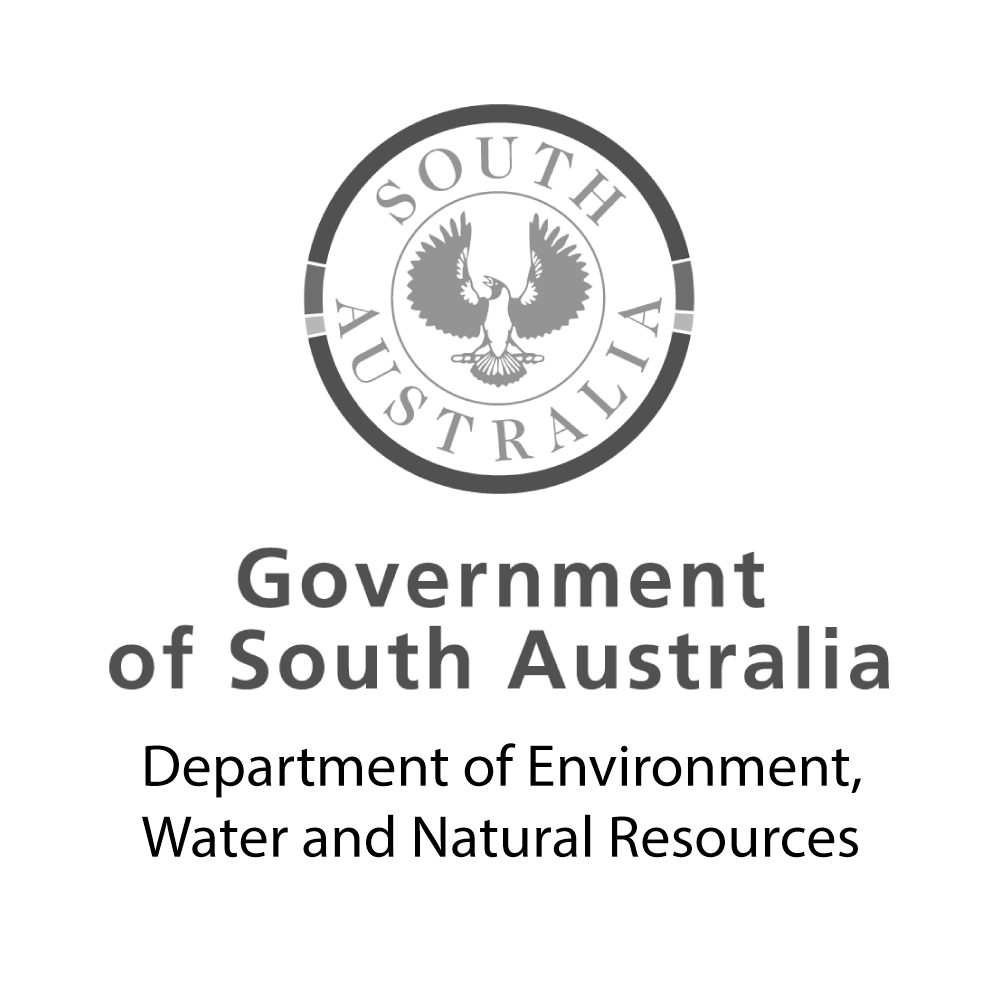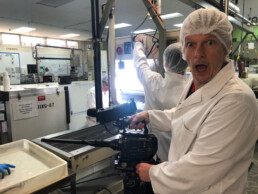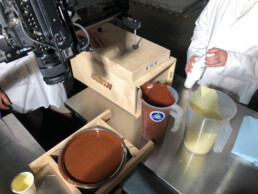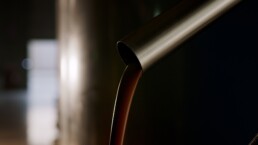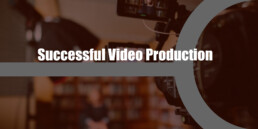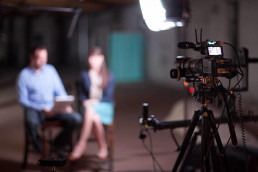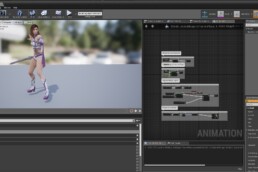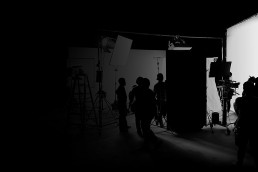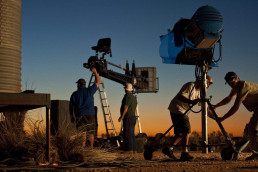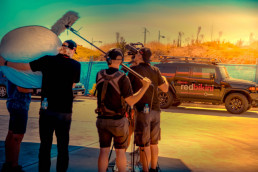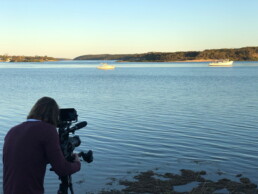AR-VR | Future Of Marketing
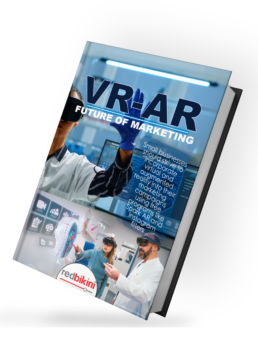
Virtual reality has been steadily gaining momentum over the past few years. As of 2018, 78% were familiar with virtual reality technology. Today, nearly 60 million people use virtual reality each month in 2021. With the recent announcement of Facebook’s moving into the Meta-verse, the virtual reality market is predicted to explode, with the IDC predicting VR shipments to reach 26.7 million shipments a year by 2025.
Virtual and augmented reality is going to change the face of marketing. Brands are already starting to incorporate this technology into their marketing with great success. This article will explore exactly how virtual and augmented reality is going to change marketing, and will reference how some brands are a step ahead with incorporating this technology into their marketing strategies.
What is Virtual and Augmented Reality?
Virtual reality started with the use of panoramic paintings and stereoscopic image in the early 1900s. Predictions about virtual reality started in the science fiction realm in the 1920s, when science fiction writer Stanley G. Weinbaum wrote Pygmalion’s Spectacles. Computer scientist Ivan Sutherland and his student Bob Sproull invested the first virtual reality head-mounted display system in 1968. Virtual reality continued to move forward with the creation of multiple flight simulators and the MIT Movie Map of 1977.
Today, virtual reality is booming in popularity. Every day, new games, virtual reality technologies and other augmented marketing campaigns are being released. Virtual reality shopping reached new heights following the COVID-19 pandemic. In Australia alone, 44% of consumers say they are more willing to use virtual reality to shop thanks to the pandemic.
Today, virtual reality is all about placing consumers in a computer-generated world. It separates the consumer from the real world and immerses them in the virtual experience. Popular examples of this include VR headsets and virtual reality game offerings.
Augmented reality, on the other hand, involves bringing computer-generated content into the real world. Customers are able to see how digital products would fit in their home, or see what a specific pair of shoes looks like with their outfit, without leaving their home.
Both offer a new, unique way to market products and services to consumers. Virtual and augmented reality is growing more and more popular every single day. In order to offer a unique experience for consumers, businesses need to start incorporating virtual reality into their marketing strategy.
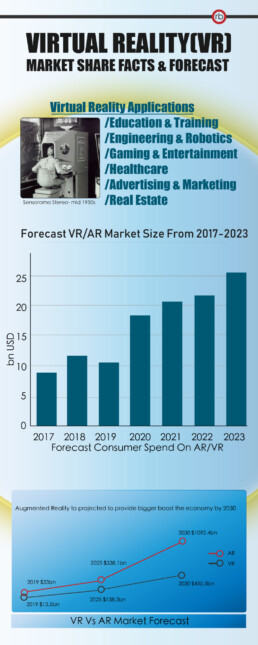
› Virtual Reality: Better Customer Experience
Virtual reality means there is a wealth of opportunities for providing an enhanced customer experience. VR means customers can see products at their real scale and experience how they work, improving conversion. VR also reduces the barriers many brands face is persuading customers to use their product or service.
Customer service can be carried out via virtual reality. Offering virtual offices and making it easier than ever before to talk to a real person online, VR means brands can solve customer queries faster than ever before. Cadillac is doing this well with their virtual dealerships, which allow customers to shop their range and speak with salespeople without leaving their homes.
› Augmented Reality and the Ability to Virtually ‘Try-On' Products
Virtual Reality technology allows for the potential for consumers to virtually ‘try-on’ products before they buy them. Currently, many brands are using this technology straight from mobile phones. Ikea offers Ikea Place, which allows you to browse Ideas catalog of products and use your mobile phones camera to place the products digitally within your home. This means customers are able to see what the product may look like in the space prior before buying it.
VR headsets and controllers may be used in the future to offer a tactile trying on experience. This technology will be continually developed into the future, and brands should start figuring out how they can use this technology to provide better customer experience. Here are some potential uses for this technology:
- Allowing customers to ‘try-on’ your product.
- Allowing customers to walk-through homes, spaces, and other large-scale projects.
- Letting customers experience the product through virtual reality.
› Virtual and Augmented Reality: Changing the Way We Market Via Mobile
Augmented and virtual reality allows brands to craft experiences and engage consumers in unique, never-before-seen ways. Marketing is driven by consumers, and as new technology continues to grow, brands need to find new ways to meet the needs and desires of consumers.
Augmented reality allows brands to provide customer’s with creative experiences from their mobile device. Augmented reality is a powerful tool for driving sales and allows customers to use their mobile to experience products in new ways.
Augmented shopping experiences are becoming explosively popular. Now, consumers are able to test drive cars and see if a pair of Gucci shoes will suit them without leaving their couch.
This technology is continuing to expand, and brands need to ensure they are involving virtual and augmented reality into their mobile marketing plans.
Here are some ways brands can use augmented reality (AR) in their marketing campaigns:
- AR digital brochures, pamphlets and experiences that let customers try before they buy.
- Offering interactive product experiences via mobile.
- Allow customers to speak directly with sales reps and people within your brand from the comfort of their device using AR or video software.
Provide long and short-form interactive video marketing.
› Product Training for Buyers
Brands are able to create real-world scenarios and allow customers to learn how to use their products effectively using VR. Brands can even offer feedback in some cases, allowing consumers to intuitively learn how the product will benefit their day-to-day life.
Using virtual reality for product training allows consumers to see the product in action. Demo equipment and additional shipping costs are a thing of the past with virtual reality taking the marketing world by storm.
› Long-Form Video Virtual Reality Marketing
Younger demographics love video content. The massive growth of platforms like TikTok has proven this. Thus, marketers need to ensure that video marketing is a focal point in their marketing strategy.
Virtual reality provides exciting opportunities to utilize long-form video marketing experiences for consumers. By fully immersing potential buyers in these interactive experiences, brands are able to persuade buyers to purchase and increase conversion rates with ease. There are plenty of applications for this kind of marketing as well.
› The Future of Online Events
Online events have become widely popular due to the pandemic, and we expect to see this continue long after the pandemic. Using virtual reality to host interactive events is the future. Whilst this technology is in its early stages, we expect to see a rapid growth in brands hosting unique virtual online events.
COVID has shown that showcases, launches, exhibitions, networking events and company events can all be hosted via virtual reality. This will allow customers to gain a different insight into the brand and is likely to increase the success of launches. Virtual reality is truly going to change the way we run virtual events, and brands should start utilizing VR today to be a step ahead.
How Brands are Using Virtual Reality
• TopShop:
TopShop utilized virtual reality to create the TopShop VR catwalk experience. This campaign allowed users to sit at the center of a fashion show, and then go backstage to see the behind-the-scenes and meet celebrities. This campaign was very successful, and customers were able to relive the show whenever they wished and shop looks directly from the show.
• TOMS Shoes:
TOMS Virtual Giving Trip took viewers to Peru and chronicled the company’s donation and mission efforts. Consumers were able to meet school children who were about to receive TOMS shoes, and see the impact of the shoes on their lives. TOMS then set up this experience in all of their stores. The campaign was a massive success.
• Oreo:
Oreo released an interactive experience for customers to see how the brands Filled Cupcake flavored Oreos are made. Imaginative and fun, this experience took viewers to the ‘Wonder Vault’ where cookie flavors are created. A fun campaign that was well-targeted, it brought excellent awareness for the new product launch.
• Adidas:
Adidas showcased the mountain-climbing journey of two athletes that are sponsored by TERREX. With 360-degree views, viewers were able to follow the climbers throughout the journey, using a VR headset and two sensory remote controls. Consumers were able to scale Delicatessen mountain alongside the climbers, rock by rock. The campaign was a true success and an unforgettable way to market TERREX’s line of clothing.
• L’Oreal:
L’Oreal’s app MakeUp Genius allows consumers to try out make-up and hair styles from the comfort of their own home. Consumers are able to test make-up without the use of shares samples and without leaving their home. As customers try-on new looks, the app offers recommendations tailored for them. The app has been a massive success, and has been downloaded over 20 million times.
Why is VR and AR Marketing so Successful?
Immersive experiences offer high sensory impact. The brain tricks the body into thinking it’s actually in the virtual environment, which is why virtual reality marketing campaigns are so compelling. This heightened sensory experience creates an emotional link with the experience, and this is very powerful for sales. Global spending on augmented reality and virtual reality is forecast to increase from just over $12.0 billion in 2020 to $72.8 billion in 2024 as we move out of the pandemic. (Source: IDC)
Consumers get to live the story of your brand rather than just being an observer. The lack of fourth wall means that no special editing is needed to convince the brain that you’re there. Consumers get to experience the product and what it means on their own terms, which leads to heightened engagement with the campaign.
VR and AR also captures 100% of the user’s attention. Especially in the case of VR, the headset means the rest of the world is shut out and users are fully immersed in the marketing campaign. This means brands have a higher chance of making a conversion, as there are no distractions and reasons to click away.
Augmented reality allows you to put your product in a consumer’s hands without them leaving their home. This encourages them to buy the product, as they get to fully try the product. Augmented reality also reduces returns rates, as customers expectations are often succeeded thanks to the immersive component of the experience.
Thus, there are many benefits to incorporating VR and AR into your brand’s marketing today. It’s a powerful tool that is changing the way brands market goods and services.
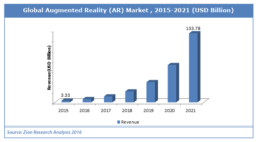
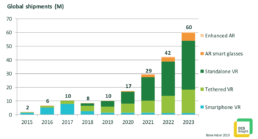
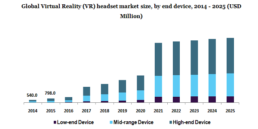
› VR and AR Marketing for Small Businesses
Small businesses can use Facebook’s Spark AR online tool to created augmented reality content for free, with no knowledge of coding required. Instagram and Snapchat are also offering augmented reality features that can be used to boost small businesses marketing efforts for free.
Small businesses can create interactive filters that customers can use to showcase products and user-generated content on their social medias. The upfront cost for doing something like this is small, and users will be able to interact with the brand directly.
Hosting live shows on Facebook and Instagram is another way to offer an immersive virtual experience for small businesses. Again, the upfront cost of this is nothing and it will allow customers to uniquely engage directly with your business.
› How Virtual Reality will Change Marketing and the Consumer Experience in the Future
We know that customers love great customer experiences. 86% of consumers are more likely to purchase a product or service when they receive great customer service and experience from the brand.
As virtual reality continues to grow, many stakeholders predict virtual reality to take over from in-store customer experience initiatives within the next five years. VR is changing how shop. Fully immersing us in the shopping experience, the traditional limits on shopping experiences including time or location are a thing of the past. A truly globalised experience, you can shop anywhere from around the world without leaving your couch.
This means customers can try products and shop new brands that they usually wouldn’t be able to, which changes the way we shop for the better.
The emotional and immersive aspects of VR is what will change the consumer experience forever. Marketers can develop experiences that trigger emotions like exhilaration, fear and excitement and fully immerse their audiences in the campaign. We know that when marketing campaigns appeal to human emotions, they tend to be more successful.
VR takes this to a new level. You can market incredible, emotional campaigns and fully immerse the audience within the experience, leading to greater conversions.
AI-powered chatbots and other virtual assistants can really improve the level of customer service your brand offers to consumers. Businesses are able to showcase how much they value their customers and offer intuitive, virtual reality customer service experiences that can operate at any time of the day.
Virtual reality allows us to travel the world from the comfort of our own couch. We can attend concerts and communicate with friends through virtual reality. VR and augmented reality are truly changing the face of marketing radically, and brands need to get on board quickly to get ahead with this technology.
Final Thoughts
Virtual reality and augmented reality are truly changing the way brands market to consumers. Bringing unique experiences, customers are able to try products before they buy them, and fully immerse themselves in different brands advertising campaigns. All of these lead to better conversion rates, as customer’s get to fully experience the product prior to buying it.
Both are highly successful in persuading buyers due to the immersive nature of the experience. Campaigns are more memorable and more compelling when VR and AR are used. Small businesses should strive to incorporate virtual and augmented reality into their marketing campaigns using free programs like Spark AR and Instagram filters. Virtual and augmented reality are truly changing the marketing landscape. Brands need to start incorporating virtual and augmented reality into their marketing strategies today, or risk falling behind.
Read & Share
GET IN TOUCH
Authenticity : Hottest Content Trends in 2021
Authenticity: Hottest Content Trends in 2021
Creating authentic content for your brand and being transparent in your actions is an incredibly powerful way to build a loyal following.
There’s an old industry joke that states the most crucial thing in marketing is authenticity, and if you can fake that, you’ve got it made. While that may have worked once upon a time, in today’s digital age, people can smell a rat instantly, so really, the joke’s on you. Creating authentic content for your brand and being transparent in your actions is an incredibly powerful way to build a loyal following. It can build deep connections, create trust and even have your audience care about you and what you do, and for you, the business owner, there’s nothing better than that. Most people are exposed to more than a dozen marketing channels every day, including various social media platforms, emails, Google searches, websites, radio and TV. Take email marketing as an example, the average consumer receives multiple marketing emails every day – ‘EOFY sale’, ‘We thought you’d like these’, ’25 per cent family and friends discount!’. Some could receive in the hundreds. But consumers are savvy, and what this volume of information does is actually make them less tuned into marketing messages because they become familiar with the approaches and all the copy starts blurring into one, so they become unaffected.
What does this mean for you? You begin losing any cut-through because everyone is saying the same thing, and consumers scan through the volume of marketing and move on. Nothing gets any real attention. The result – you lose out on sales.
.: Brand Strategy
The good news is that you can overcome this. How? Well, as mentioned earlier, authenticity is key. The best way to get through to potential buyers is to build your brand’s personality, as well as your own, letting people get to know you on a deeper level. People want to have deeper connections with the brands they do business with. Suppose a brand can make an effort to speak to their audience on a more personal level. In that case, people will respond positively because the dehumanisation of society resulting from the digitisation of communication has led to a lack of personality and effective communication. Consumers are not interested in gimmicks but rather seek genuine brands and come from a place of sincerity, and brands that understand and embrace this will find that people will respond to them very strongly.
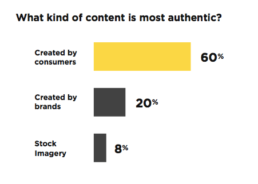
.: Understand Your Audience
The first step to being more authentic in your content marketing is to make sure you fully understand your audience, the values they hold dear and subsequently to ensure your brand reflects those values. If your audience is particularly focused on compassion, then you need to build your brand to show that your focus is also on compassion. It’s also important to be articulate, so people understand what your brand stands for. Avoid using jargon and hyperbole and get to the point because it will help your audience understand quicker what your brand represents. Sales talk is off-putting and is the perfect way to make consumers disengage from the conversation you’re so desperate to have with them.
.: Attributes Window
Next, understand that people are drawn towards attributes such as friendliness, warmth, honesty, thoughtfulness and open-mindedness. They also like brands that teach, help and assist them, and are not just about the brand themselves. Followers become loyal when they have access to easily digestible and readily available information, when they know it’ll be easy to solve a problem they might encounter, and the brand is friendly and approachable. It’s about making it straightforward for people to access what they need. You only need to look at the success of a little American technology company bearing fruit for its logo to see how this rings true.
.: Add Value
When it comes to video content – and this is where it’s really at in this technology-driven era, you need only look at the rise of video platforms such as Tik Tok and YouTube – understand why you are creating the video (building brand awareness? Educating?), plan and be strategic. Ensure the quality is good, be it shooting from your phone or a full-blown set-up, or you can put viewers off, but don’t be rigid as though you’re reading from a script. Above all, be consistent, you can’t build a loyal and long-term following if your views are all over the place. Deliver valuable content your audience wants to consume, and engagement will follow.
.: Deliver Consistent Message
Finally, it’s vitally important that your content reflects all these points mentioned across the entire organisation, whether it be your website, social media, or how you interact in stores. And everyone involved needs to be across this and know what it is you stand for and trust in your brand because it can be destroyed in one moment if not everyone is on board. Remember, your actions are as necessary as anything else.
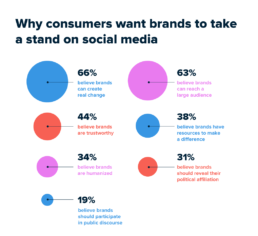
In a nutshell, authenticity is your brand’s best friend. It is imperative to achieve success, understand your audience and share the same values as them, be focused on the authenticity of your brand, and believe in what you’re doing. Take the opportunity to form a deeper bond with your customers because if done well, these values are the sorts of things that people share with their friends and it, in turn, creates more loyal followers. Build deep connections, generate trust and if you can have your audience care about you and what you do, there’s nothing better than that.
At redbikini, we live and breathe all things video production, offering more than 20 years’ on-set experience. redbikini and our digital marketing arm, LOOP, which we launched in 2020, helps South Australian businesses set clear, realistic and measurable goals to generate growth. Together we offer an affordable, step-by-step digital marketing program that identifies opportunities and helps take your business to the next level.
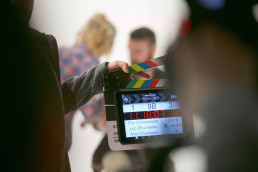
Read & Share
GET IN TOUCH
Winning Tenders – Why Marketing Matters
“Risk is in the DNA of everything defence related”- Justin O’Brien
Companies with watertight marketing strategies, strong branding and alluring video content are the most likely to establish strong business connections when competing for defence contracts, according to a leading industry expert.
A concise and targeted marketing campaign also provided businesses an opportunity to make a great first impression and establish initial connections, said Justin O’Brien, creative director of video production company redbikini and B2B digital marketing business LOOP.
Mr O’Brien said it was vital for businesses to have a positive digital profile in order to stand out and “nudge” their tender in the right direction, noting the increasing competition vying for defence projects in South Australia.
“When people start analysing your business as a potential partner, it’s important that you’re putting your best foot forward,” he said.
“When a tender lands on someone’s desk from a business they may not be overly familiar with, the first thing they’ll do is desktop research to look at who you are.
“And when you have a competitive tender that makes it through to the second round of evaluation, this is where good marketing, your content, your website, can nudge your tender in the right direction.”

Article: Justin O’Brien
Mr O’Brien said marketing was about finding the best environment to sell a company’s products and services and putting them in front of the decision makers.
“Your website, digital communications and media communications all play an important role in continuing the sales process when you’re not in front of your customers,” he said.
Risk management was also a key factor contributing towards a successful tender process.
“Risk is in the DNA of everything defence related,” Mr O’Brien said.
“Keeping our defence force personnel is the principle driving factor in all defence procurement. But other factors such as workplace health and safety, cybersecurity and intellectual property are also vitally important.”
With contracts worth millions and even billions of dollars, defence companies looking to buy a product or service from another business want to be shown how potential risk factors can be minimized.
“When an organisation looks to an SME, the first thing they do is look to a risk analysis in order to establish whether they’re in safe hands,” Mr O’Brien said, adding that a lot can be determined based on a company’s website.
“Having brand and marketing assets that demonstrate your commitment to risk mitigation and effective quality procedures can be very advantageous in a tender environment.
“If you have a website that looks like it was designed in 1990 and you do little in terms of communication and managing your company’s own story these could be seen as negatives to some procurement officers”.
Mr O’Brien said this due diligence was also performed by companies moving into the Australian market to facilitate defence procurement.
“These organisations will be looking to partner with industry to fulfill local content requirements and they will apply the same criteria – the businesses that look to have their act together will be the ones to receive the first phone calls,” he said.
“Having a good tender is just the price of entry. If you don’t have a good competitive tender with the right product with the right risk with the right profile you won’t go anywhere.”
Like all business, defence organisations were also more likely to choose companies they knew of or had come recommended so it was imperative to have a well-executed and strategic marketing plan that was ahead of the curve.
“In defence as in life, familiarity matters,” Mr O’Brien said.
“People who know a brand or have had some sort of history with it, that familiarity produces an environment where they’re more likely to progress things because they have confidence that they’ll take the right steps going forward. It builds confidence.”
Mr O’Brien said it was important to note that tenders were never viewed in isolation and those likely to be chosen both ticked all the boxes and were a step ahead of their competitors.
“Often you’ll have competing products at the same level,” he said.
“Your website, digital communications, media communications all play an important role in continuing the sales pitch when you’re not in front of your customers and in order to work effectively, they need to be strategic.”
Mr O’Brien said video was a valuable marketing tool to effectively drive home the abilities of a business.
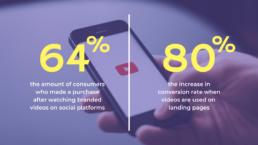
“A really well-executed video about your commitment to quality and employee safety might be what puts your tender within one per cent of the finish line,” he said.
“Whether someone is the CEO or a junior procurement officer, the one thing that unites them is that they find video easier to consume than the written word.
“A well-made short video that is of interest to them will perform better than a page of text – it’s strategic content, readily available and easy to consume.”
Mr O’Brien said often businesses made the mistake of not investing time and money into marketing themselves properly, which was detrimental to their brand.
“A lot of SMEs looking to target defence don’t have the time or money to put into it, it’s one of those things that get left on the to-do list,” he said.
“Those organisations that can recognise the opportunities that come with sound marketing and communication, and spend time and money on their brand so their organisation looks professional across the board, understand that it could be the difference between making it on the tender list to begin with.”
Mr O’Brien said it was vital for businesses to see the bigger picture.
“The bottom line is if you don’t view your business holistically and view marketing and communications as one of a number of vital cogs required to drive your business you’ll miss out on opportunities.”
Redbikini/LOOP boasts more than a decade of experience working for organisations in a B2B environment in defence and helps South Australian businesses set clear, realistic and measurable goals to generate growth.
With one of Australia’s largest defence vision libraries and an affordable step-by-step digital marketing program that identifies opportunities and assists clients to take advantage of them, the team at redbikini/LOOP stand ready to take your business to the next level.
Follow our blog to stay up to date with the latest from redbikini.
GET IN TOUCH
Diabetes SA Video Commercial
South Australian advertising and digital agency Bigwig approached redbikini with the idea to film an eyeball up close for a Diabetes SA commercial, in part highlighting the correlation between the disease and its damaging impact on vision.
In theory, the concept seemed simple enough, but the filming process was in fact incredibly complex and technical and required a high-level of expertise and patience to perfect.
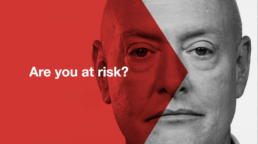
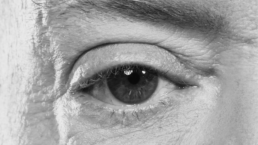

Img. Process Involved Behind The Perfect Shot
Beginning with an extreme close up of the pupil, the camera tracked back over the course of 20 seconds to end with the reveal of a man’s face.
redbikini sourced a specialised macro lens for one of our 4k cameras, which was mounted on a dolly with a wireless follow-focus. This was the only way we could achieve the required shots in both the closeup and wide aspects and still maintain focus.
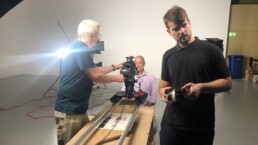
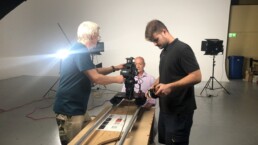
Img. Process Involved Behind The Perfect Shot
Filming took half a day to nail just one perfect shot, but we’re incredibly proud of the end result, which you can check out here.
WHAT OUR CLIENTS SAY
The quality of the work is outstanding. Justin, Danielle and the team’s enthusiasm for what they do is obvious. They continue to raise the bar in finding ways to approach all videos, and dealing with them is a delight.
Defence SA and the South Australian Space Industry Centre have used the services of redbikini for many years and have always appreciate their willingness to push the boundaries and deliver outstanding results. Their attention to detail and library of footage is priceless and the team are always on hand to make last minute changes and work to tight deadlines without compromising quality. The agency will continue to recommend redbikini to stakeholders who are looking for services that they provide specific to defence and space industry as we know they are experts in this area.
Highly recommend Justin and the team for a professional service and high-quality result. From the initial concept meeting through to delivery, the process was seamless and the outcomes have exceeded expectations.
A company that produces brilliant results, no matter what task we have given them. Many have asked who produced our videos due to their premium quality.
We engaged redbikini at Haigh’s Chocolates for the development of a cinema advertisement and series of promotional videos to raise brand awareness and customer engagement across our network of retail stores. We found Justin and his team a pleasure to work with bringing a unique creative approach to meet our brief. They carried out their business with the utmost professionalism and organisation, making everything seem so easy and effortless to get the outcome we were after. They are always a pleasure to work with. We were very happy with the end result and would highly recommend them.
We have been working with redbikini for the past 10 years and are delighted to be able to provide a reference for them. redbikini were engaged to develop a series of TV commercials targeting people working in the livestock industry. These TV commercials required travel across the Australian continent, in regional and remote areas. The conditions were often challenging, particularly when using equipment that is sensitive to dust! We found Justin and his team a pleasure to work with, bringing a unique creative approach to meet our brief. They carried out their business with the utmost professionalism and organisation, making everything seem so easy and effortless to get the outcome we were after. The resulting imagery is highly cinematic, capturing the reality of farm life and contributing to the growth of our brand across Australia. We were very happy with the end result and would highly recommend them.
redbikini act with the highest professionalism making the experience fun and creative. redbikini are knowledgeable, approachable, easy going with a fine eye for detail and a willingness to accept nothing but the best.
The team at redbikini are terrific work with, and highly professional. Bentleys as been delighted with the quality of their work. Their productions have helped us achieve our corporate objectives and get where we want to be.
Water Wisdom | Five Part Series For SA Water
Water Wisdom is a five-part series created by redbikini and broadcast on the ABC, examining how South Australia’s Indigenous communities manage their water resources.
Commissioned by SA Water, redbikini was asked to showcase the various ways aboriginal groups source and manage their fresh water resources across the state in a series of videos designed with the intention of being published through SA Water’s digital channels.
Our recommendation was that rather than create the videos in traditional ‘corporate video’ style, they would work best (and appeal to a broader audience) if they were done in a presenter-led format with a TV ‘science show’ approach – an idea SA Water was very happy to run with.
We engaged well-known and proud Kaurna man Jack Buckskin as host and travelled to various locations across the state, including the far west coast, Adelaide Plains, south east, northern Flinders Ranges and the Coorong and Lower Lakes.
On location we got to shoot the picturesque landscapes and interview local Aboriginal elders and community members to gain insight into their practices.
The more we delved into the subject matter, we quickly realised just how different the environment was in each region, and how each region’s groups varied in their approach to water and water management. This led to a fascinating and hugely successful showcase about the variety of techniques and technology used by Australia’s First Nation people.
Once completed the series was picked up for distribution online on ABC iview, and subsequently broadcast on the ABC Me television channel.
- See what all the excitement is about here: WATER WISDOM SERIES
WHAT OUR CLIENTS SAY
The quality of the work is outstanding. Justin, Danielle and the team’s enthusiasm for what they do is obvious. They continue to raise the bar in finding ways to approach all videos, and dealing with them is a delight.
Defence SA and the South Australian Space Industry Centre have used the services of redbikini for many years and have always appreciate their willingness to push the boundaries and deliver outstanding results. Their attention to detail and library of footage is priceless and the team are always on hand to make last minute changes and work to tight deadlines without compromising quality. The agency will continue to recommend redbikini to stakeholders who are looking for services that they provide specific to defence and space industry as we know they are experts in this area.
Highly recommend Justin and the team for a professional service and high-quality result. From the initial concept meeting through to delivery, the process was seamless and the outcomes have exceeded expectations.
A company that produces brilliant results, no matter what task we have given them. Many have asked who produced our videos due to their premium quality.
We engaged redbikini at Haigh’s Chocolates for the development of a cinema advertisement and series of promotional videos to raise brand awareness and customer engagement across our network of retail stores. We found Justin and his team a pleasure to work with bringing a unique creative approach to meet our brief. They carried out their business with the utmost professionalism and organisation, making everything seem so easy and effortless to get the outcome we were after. They are always a pleasure to work with. We were very happy with the end result and would highly recommend them.
We have been working with redbikini for the past 10 years and are delighted to be able to provide a reference for them. redbikini were engaged to develop a series of TV commercials targeting people working in the livestock industry. These TV commercials required travel across the Australian continent, in regional and remote areas. The conditions were often challenging, particularly when using equipment that is sensitive to dust! We found Justin and his team a pleasure to work with, bringing a unique creative approach to meet our brief. They carried out their business with the utmost professionalism and organisation, making everything seem so easy and effortless to get the outcome we were after. The resulting imagery is highly cinematic, capturing the reality of farm life and contributing to the growth of our brand across Australia. We were very happy with the end result and would highly recommend them.
redbikini act with the highest professionalism making the experience fun and creative. redbikini are knowledgeable, approachable, easy going with a fine eye for detail and a willingness to accept nothing but the best.
The team at redbikini are terrific work with, and highly professional. Bentleys as been delighted with the quality of their work. Their productions have helped us achieve our corporate objectives and get where we want to be.
GET IN TOUCH
A high-quality video for a high-quality brand; Haigh’s Chocolates
Long regarded as one of South Australia’s most treasured and successful brands, Haigh’s Chocolates engaged the services of video production company redbikini to give audiences a behind the scenes look at its processes.
Bean to Bar is a video collaboration between redbikini and Haigh’s, which captures the essence of what makes Haigh’s chocolates so special. The video showcases the steps involved in the art chocolate-making, which includes the revered Adelaide brand sourcing its own cocoa beans from around the world.
Fig. Production Team In Action
redbikini was tasked with finding creative ways to raise the (chocolate) bar when presenting the crafting processes and demonstrating how involved the chocolatiers are from start to finish as Haigh’s prides itself on making its chocolate from scratch to achieve their unique flavour.
The onus was on making the footage, dramatic, cinematic and mouth-watering. Every step of the process was analysed and redbikini developed creative ways to best illustrate the delicious craft. From filming in their pristine factory at Mile End, to recreating the bean roasting process in studio – complete with flame – and working with food stylists, redbikini made sure every shot looked the best it could.
Pushing the boundaries of filming, the team behind redbikini researched the best types of cameras and lenses to use in order to make the end result as cinematic as possible.
During the post-production phase, time was spent to ensure every aspect of the video was complementary, including the music that went with the vision and graphics. The end result, which will be distributed to Haigh’s database and played in stores and online, speaks for itself.
WHAT OUR CLIENTS SAY
The quality of the work is outstanding. Justin, Danielle and the team’s enthusiasm for what they do is obvious. They continue to raise the bar in finding ways to approach all videos, and dealing with them is a delight.
Defence SA and the South Australian Space Industry Centre have used the services of redbikini for many years and have always appreciate their willingness to push the boundaries and deliver outstanding results. Their attention to detail and library of footage is priceless and the team are always on hand to make last minute changes and work to tight deadlines without compromising quality. The agency will continue to recommend redbikini to stakeholders who are looking for services that they provide specific to defence and space industry as we know they are experts in this area.
Highly recommend Justin and the team for a professional service and high-quality result. From the initial concept meeting through to delivery, the process was seamless and the outcomes have exceeded expectations.
A company that produces brilliant results, no matter what task we have given them. Many have asked who produced our videos due to their premium quality.
We engaged redbikini at Haigh’s Chocolates for the development of a cinema advertisement and series of promotional videos to raise brand awareness and customer engagement across our network of retail stores. We found Justin and his team a pleasure to work with bringing a unique creative approach to meet our brief. They carried out their business with the utmost professionalism and organisation, making everything seem so easy and effortless to get the outcome we were after. They are always a pleasure to work with. We were very happy with the end result and would highly recommend them.
We have been working with redbikini for the past 10 years and are delighted to be able to provide a reference for them. redbikini were engaged to develop a series of TV commercials targeting people working in the livestock industry. These TV commercials required travel across the Australian continent, in regional and remote areas. The conditions were often challenging, particularly when using equipment that is sensitive to dust! We found Justin and his team a pleasure to work with, bringing a unique creative approach to meet our brief. They carried out their business with the utmost professionalism and organisation, making everything seem so easy and effortless to get the outcome we were after. The resulting imagery is highly cinematic, capturing the reality of farm life and contributing to the growth of our brand across Australia. We were very happy with the end result and would highly recommend them.
redbikini act with the highest professionalism making the experience fun and creative. redbikini are knowledgeable, approachable, easy going with a fine eye for detail and a willingness to accept nothing but the best.
The team at redbikini are terrific work with, and highly professional. Bentleys as been delighted with the quality of their work. Their productions have helped us achieve our corporate objectives and get where we want to be.
3 Strongest Uses of Video Content Marketing | 2021
The Three Strongest Uses of Video Content Marketing
Welcome to the new roaring 20s: our attention spans are shorter, we consume information faster, and we frequent YouTube far more than we do speakeasies. In this golden age of video, the stats are looking up to a fast-paced future full of video content, so to help your videos cut through the pandemonium and save on brass, we’ve broken down the three strongest uses of video content to keep you ahead of your competitors.
1. Thought Leadership.
Essentially, thought leadership is strategy 101. It is about understanding your brand inside and out and the different niches in which you operate, identifying what your potential customers look like and addressing the ‘marketing, branding’? issues they are experiencing.
The best way to tackle them? Through your video content.
Let’s say your company, Hypothetical Engineering Company (HEC), wants to perform work in three areas – air conditioner ducting for defence, council engineering for elevated structures, and commercial construction framing.
Each of HEC’s customer niches have very different pain points:
- Defence may be focused on quality processes, high-tolerance and precision, and safety and security procedures.
- Council may be a bit more focused on pricing than defence, but mostly concerned with time efficiency to reduce traffic disruption.
- Commercial construction may expect tolerances and timing to be given, and may be more price-sensitive, looking for lower costs and adding value.
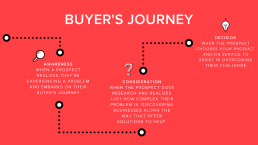
Now that you’ve identified your customer niches and their pain points, it’s time to produce video content that directly addresses those concerns.
So how do you achieve this? By creating a brand campaign video that promotes HEC’s ability to carry out safe high-accuracy practices, with efficient systems in place to ensure on-time production, and its advanced technology to reduce construction costs.
This video utilises ‘Thought Leadership’ to best align your company’s digital marketing strategy with your audience and your vision. Designed to be widely distributed and direct to your target audience, this video is a sure way to drive traffic to your website.
- Who is your target audience?
- Who do you want to speak to?
- What does a new customer look like for you?
- What niches do you operate in?
- What are the pain points of the people currently working in these niches?
We explore this deeper our blog post: Video Production in 7 Parts – Chapter 1: Strategy
2. Explainer Videos
Explainer videos are easily digestible content which, as the name suggests, explain the value you, as a brand, bring to your customers or niche market. Be it focused on your people, your systems and procedures, or your company ethos, this content is designed to engage and call your target audience to action – that is, encourage them to make a phone call and ask for a quote or subscribe to a mailing list. This is not content for everyone; it’s a targeted, strategic part of the sales process. Where the previous, wide-spread Thought Leadership-driven video is about Hypothetical Engineering Company’s customers and their pain points, these ritzy, targeted videos are about HEC as a brand and what HEC can do for its clientele. In other words, it’s your time to shine, so make it count!
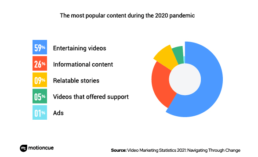
3. Talent Acquisition & Internal Videos
Internal videos serve the purpose of promoting a company’s internal culture. In a nutshell, these are videos designed to go out into the community to drive traffic to your website and attract new talent as well as retaining existing staff. They can focus on boosting the morale of an organisation by highlighting the benefits of working there, celebrating its employees – including any awards and achievements – showcasing staff-generated content, and posting positive profile videos about the company.
Basically, what it boils down to is businesses that successfully engage and communicate with their employees and demonstrate that they are concerned about more than just the bottom line tend to outperform those that don’t. It is becoming increasingly important for employers to be seen as a good place to work and therefore the company and its values need to be communicated both internally and externally so that existing and potential/future employees feel like it is the kind of place they want to work at. That is the power of internal videos.
How? By effectively communicating with existing employees to make them feel appreciated and positive about their workplace so that they’ll talk positively in other circles. These videos can also be an effective tool in acquiring the talent your business needs in order to gain the edge over your competitors by highlighting what makes yours an attractive company to work for. These are not marketing videos in the usual sense of the word, they have a much narrower focus and sometimes when an organisation may only be looking for one or two people, if it gets the right person working there, that’s worth its weight in gold.
In industries such as technology, defence, space related or any other professional occupation, attracting the best talent is a key benchmark to how your business will perform as a whole. Using video is the most effective way of communicating your belief system, your culture and the benefits of working at your company. Even simple internal videos can empower employees, make them feel loved and therefore increase word of mouth in their peer groups, which can be instrumental in attracting the right talent to your firm. An internal video can communicate a lot about your company’s culture in a small-time frame, and it might be all that’s needed to turn a prospective employee into an applicant.
Check out these internal video communications by redbikini as prime examples of ways to market your company at its heart.
So, there you have it. Now that you’re armed our three strongest uses of video content, you are on your way to creating powerful video content that counts. You understand your goal and your target audience with Thought Leadership to create a traffic-driving campaign video, you have your engaging call to action for said audience with your Explainer Videos, and an empowered internal culture thanks to your Internal Videos.
Call Adelaide-based video production company redbikini to discuss and strategise your ideas today.


